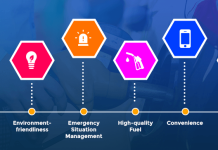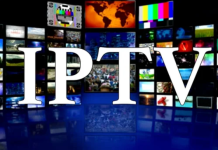In today’s digital world, financial crimes have also evolved. People have to face a loss of billions of dollars every year due to these scams. Identity theft is among the most vulnerable crimes. A reliable verification method is necessary to stop identity and other financial crimes. Video verification is a service that uses images and videos to show that a person is who they claim to be. This is a fast and easy way for a system to validate a person’s identity.
High-resolution cameras found in computers, tablets, and smartphones are helpful for user-friendly and accurate identity verification. Many businesses utilize their websites to acquire evidence of identification, such as scanned images. While some others verify the identity of a person through customer service representatives from a verification service. They contact their customers via a video channel or speak directly to them from the comfort of their homes.
Video Verification – An Overview
International and work-from-home options are becoming increasingly important in today’s digital world. It means that no one can walk through any local bank branch, government institution, or corporate office without important documents to verify their identity. In addition, many institutions must adhere to KYC regulations, which require them to take strict measures to verify the legitimacy of their customers. Use a video KYC solution to help organizations authenticate and onboard new clients by reviewing their important documents while being able to see a face. There are many uses for the video verification technique. Some of them are as follows:
Fill out the basic fields:
- Please include scanned and photographed copies of papers as well as evidence of residence, such as a utility bill or bank statement.
- Send the proof papers, as well as the signed, scanned, and signed initial forms, to the processing firm.
- Following the verification of each of these documents, the user will schedule their video verification with a reputable video provider.
- To verify the user identity, the member of staff will ask questions regarding their account information during the conversation.
- The consumer will be asked to hold these papers up to the camera so the staff member may compare them to the ones provided via email.
- These electronic copies comparison will certify the client’s credibility. The firm will then be able to open the user’s account.
Modes of Video Verification
There are three fundamental modes of video verification that are given below:
Video Assistance
Agents use a web application to communicate in real-time while using video assistance technology.
Customers record
Customers record or shoot videos of themselves with their papers on their own to confirm their legitimacy, including executing mandatory liveness tests.
Engagement of Agents
Agents engage with consumers indirectly by using video identification technology to verify the authenticity of a customer.
Anybody can feel at ease with the combination of humans and technology, regardless of which procedure is best for the client’s business. Customers can employ artificial intelligence software to improve the proofreading process with video verification. It ensures that technological advancement will correct human errors.
The Benefits of Video Verification
Video verification replicates the old-fashioned method of meeting new customers in person, looking over their physical documents, and confirming that they are authentic. However, the video KYC process provides both companies and consumers with the convenience of an internet connection. This allows them to complete this procedure without a commute or other complications. Video verification is beneficial for both businesses and clients. The following are the benefits:
For Businesses
The combination of human contact with A.I. technologies combines the best of both kinds of verification procedures for companies. A real person confirms that they are conversing with another live person who is putting these papers up to the camera.
Meanwhile, cutting-edge AI technology scans these papers and compares them to electronic copies so that the long waiting verification process could have occurred within seconds.
For Consumers
While numerous verification steps assist companies directly, customers gain from knowing that the institution they wish to join up with is truly concerned with their safety.
While verification is frequently associated with account opening, a company may later need to confirm a customer’s identity. Going through video verification indicates that the consumer has a connection with the firm and is aware that they are using many methods to ensure safety and avoid identity theft.
Conclusion
Video verification is a popular method for proactively complying with KYC and remotely onboarding a significant number of customers. The AI-powered technologies offer seamless operation and quick and simple customer verification.
The KYC video identification method is widely used in banks, exchanges for digital currencies, real estate, and other industries. It is extremely accurate and also helps to forge closer ties with foreign demographic groups. Additionally, the Video KYC solution aids in increasing a company’s or website’s market share.


























